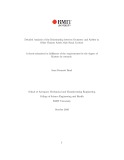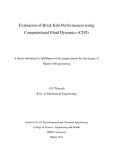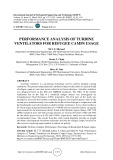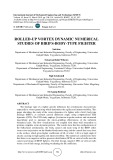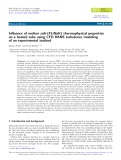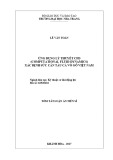
http://www.iaeme.com/IJMET/index.asp 304 editor@iaeme.com
International Journal of Mechanical Engineering and Technology (IJMET)
Volume 10, Issue 03, March 2019, pp. 304-316. Article ID: IJMET_10_03_032
Available online at http://www.iaeme.com/ijmet/issues.asp?JType=IJMET&VType=10&IType=3
ISSN Print: 0976-6340 and ISSN Online: 0976-6359
© IAEME Publication Scopus Indexed
ROLLED-UP VORTEX DYNAMIC NUMERICAL
STUDIES OF BIRD'S-BODY-TYPE FIGHTER
Sutrisno
Department of Mechanical and Industrial Engineering, Faculty of Engineering, Universitas
Gadjah Mada, Yogyakarta, Indonesia 55281
Setyawan Bekti Wibowo
Department of Mechanical and Industrial Engineering, Faculty of Engineering, Universitas
Gadjah Mada, Yogyakarta, Indonesia 55281.
Department of Mechanical Engineering, Vocational College, Universitas Gadjah Mada,
Yogyakarta, Indonesia 55281.
Sigit Iswahyudi
Department of Mechanical and Industrial Engineering, Faculty of Engineering, Universitas
Gadjah Mada, Yogyakarta, Indonesia 55281
Department of Mechanical Engineering, Faculty of Engineering, Universitas Tidar, Magelang,
Indonesia 56116.
Tri Agung Rohmat
Department of Mechanical and Industrial Engineering, Faculty of Engineering, Universitas
Gadjah Mada, Yogyakarta, Indonesia 55281,
ABSTRACT
The fuselage type of a fighter greatly influences the aerodynamic characteristic
especially in vortex generating which determines the agility and maneuverability. This
paper elucidates the study of the vortex dynamics of a fighter with a bird's body type
fuselage (BBTF), at constant canard deflection angle, using computational fluid
dynamics (CFD). The CFD study employs Q-criterion to probe vortices and structured
logarithmic grid to maintain the micro-gridding effectiveness of the turbulent
boundary layer. The flow visualizations are coupled with shear-wall streamline to
produce complete vortex dynamic pattern. The results show that the configurations of
the bulky-head aerodynamic, the body, canard and main wing of the BBTF affect
vortex core trajectories on the blended-body-main wing and the canard that very close
to the surface, which gives higher coefficients of lift, of order 1.40 at a high angle of
attacks causing its high agility and maneuverability. The numerical calculations show
that there is no negative surface pressure distribution (SPD) on vertical walls near the
canard and wings of BBTF fighters. On other design, negative SPD on vertical walls
waste a lot of fuel energy, including weakening the lift coefficient.





